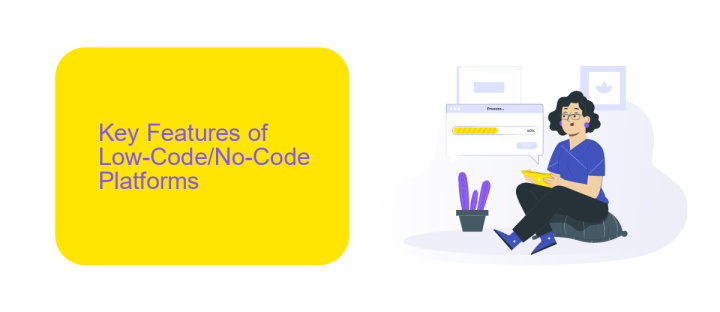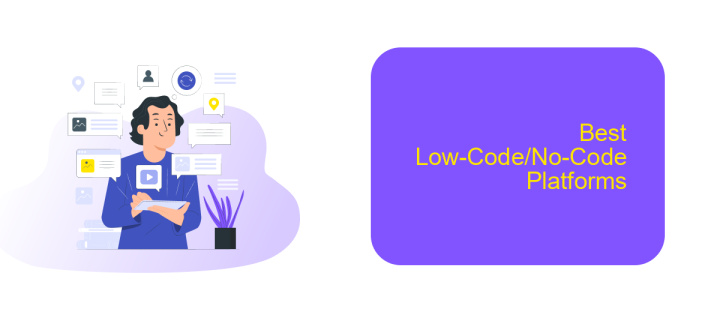Best Low-Code/No-Code Platforms
In today's fast-paced digital landscape, businesses and individuals are increasingly turning to low-code and no-code platforms to accelerate development and innovation. These tools empower users with minimal coding knowledge to create robust applications, streamline workflows, and solve complex problems. This article explores the best low-code/no-code platforms available, highlighting their features, benefits, and how they can transform your approach to software development.
Introduction
In today's fast-paced digital landscape, businesses and developers are increasingly turning to low-code and no-code platforms to accelerate application development and streamline workflows. These platforms empower users with little to no programming experience to create robust applications, automate processes, and integrate various services seamlessly.
- Rapid Development: Quickly build and deploy applications without extensive coding knowledge.
- Cost Efficiency: Reduce development costs by minimizing the need for specialized developers.
- Flexibility: Easily adapt and modify applications to meet evolving business needs.
- Integration: Seamlessly connect with other services and tools, such as ApiX-Drive, to enhance functionality.
By leveraging low-code and no-code platforms, organizations can significantly reduce time-to-market and improve operational efficiency. Whether you're a small business looking to automate routine tasks or a large enterprise aiming to innovate faster, these platforms offer a scalable solution to meet your needs. Discover the best low-code and no-code platforms to transform your digital strategy and stay ahead in the competitive market.
Key Features of Low-Code/No-Code Platforms

Low-code/no-code platforms are designed to simplify the application development process, enabling users with little to no programming experience to create functional software. These platforms typically feature intuitive drag-and-drop interfaces, pre-built templates, and visual modeling tools that streamline development. This allows businesses to rapidly prototype and deploy applications, reducing the time and cost associated with traditional coding methods.
Another key feature is the ability to integrate seamlessly with other systems and services. Platforms like ApiX-Drive facilitate this by offering easy-to-configure integrations with a wide range of applications, from CRM systems to social media platforms. This ensures that the developed applications can interact with existing tools and data sources, enhancing their functionality and utility. Additionally, these platforms often include built-in security measures, scalability options, and user-friendly dashboards for monitoring and managing applications.
Benefits of Using Low-Code/No-Code Platforms

Low-code and no-code platforms are revolutionizing the way businesses develop and deploy applications. They offer a range of benefits that make them an attractive option for organizations of all sizes.
- Speed: These platforms significantly reduce the time required to develop applications, allowing businesses to respond quickly to market changes.
- Cost-Effective: By minimizing the need for specialized coding skills, they lower development costs and make technology more accessible.
- Integration: Tools like ApiX-Drive facilitate seamless integration with various services, enhancing workflow automation and data synchronization.
- Scalability: These platforms are designed to scale with your business, ensuring that your applications can grow as your needs evolve.
- User-Friendly: With intuitive interfaces, even non-technical users can create and manage applications, fostering innovation across the organization.
In summary, low-code and no-code platforms empower businesses to innovate faster, reduce costs, and easily integrate with existing systems. By leveraging these tools, companies can stay competitive and agile in an ever-changing market landscape.
Best Low-Code/No-Code Platforms

Low-code and no-code platforms have revolutionized the way businesses develop applications, enabling faster and more efficient solutions without extensive coding knowledge. These platforms empower non-developers to create functional applications, reducing dependency on IT departments and accelerating digital transformation.
One of the key benefits of low-code/no-code platforms is their ability to streamline integration processes. Tools like ApiX-Drive facilitate seamless integration between various applications and services, making it easier to automate workflows and data exchanges. This ensures that businesses can maintain coherence across their digital ecosystems with minimal effort.
- OutSystems: Known for its comprehensive features and scalability.
- Appgyver: Offers a highly intuitive interface for building complex applications.
- ApiX-Drive: Specializes in simplifying integrations and automating workflows.
- Zapier: Popular for its extensive library of pre-built integrations.
- Mendix: Provides robust tools for both professional developers and business users.
Choosing the right low-code/no-code platform depends on your specific needs, such as ease of use, scalability, and integration capabilities. By leveraging these platforms, businesses can achieve rapid development cycles and maintain agility in a competitive market.


Conclusion
In conclusion, the landscape of low-code and no-code platforms is rapidly evolving, providing businesses with powerful tools to accelerate development and innovation. These platforms are democratizing software creation, enabling non-technical users to build applications and automate workflows with ease. By reducing the dependency on traditional coding, companies can achieve greater agility and efficiency in their operations.
Moreover, the integration capabilities of these platforms are crucial for seamless business processes. Tools like ApiX-Drive facilitate the connection between various applications and services, ensuring data flows smoothly across systems. This not only enhances productivity but also allows for more strategic use of resources. As the demand for rapid digital transformation grows, adopting low-code and no-code platforms, along with robust integration solutions, will be essential for staying competitive in today's fast-paced market.
FAQ
What is a low-code/no-code platform?
Who can benefit from using low-code/no-code platforms?
How do low-code/no-code platforms handle integrations with other services?
Are low-code/no-code platforms secure?
Can I scale my applications built on low-code/no-code platforms?
Time is the most valuable resource for business today. Almost half of it is wasted on routine tasks. Your employees are constantly forced to perform monotonous tasks that are difficult to classify as important and specialized. You can leave everything as it is by hiring additional employees, or you can automate most of the business processes using the ApiX-Drive online connector to get rid of unnecessary time and money expenses once and for all. The choice is yours!

